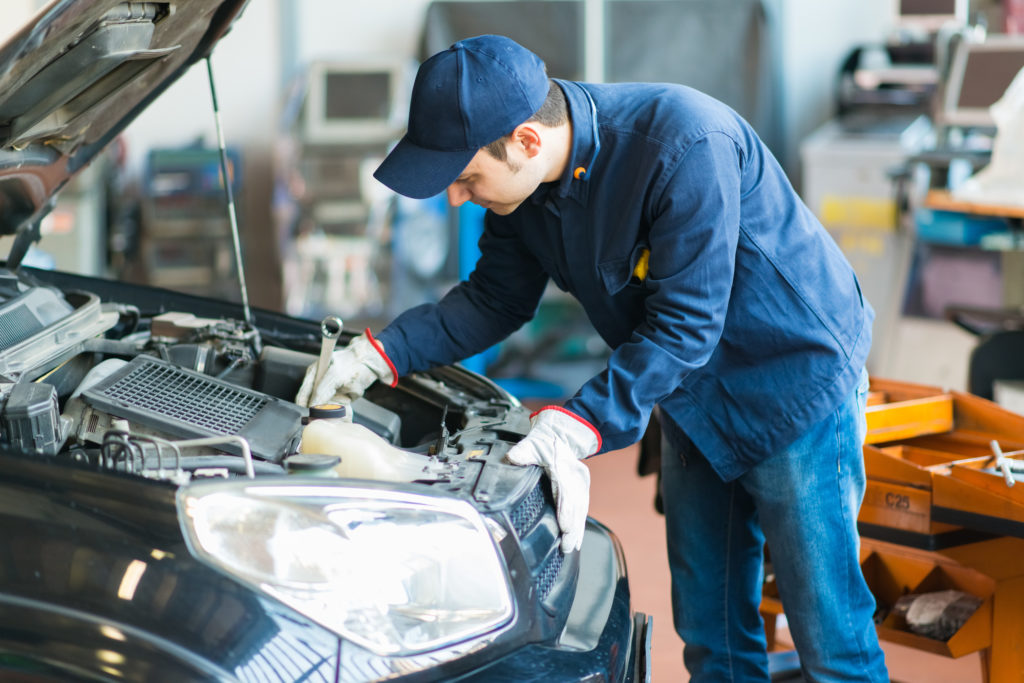
Maintenance costs for your car may run you an average of $792 per year, according to AAA. That may seem like a lot.
Though, investing in regular maintenance will save you higher repair bills down the line. It’s also an investment in maintaining your car’s investment value.
Keeping up with basic vehicle maintenance is a practical must for any car owner. Whether you’re responsible for your personal vehicle, family vehicles, or a professional fleet of cars, here are some auto maintenance tips to live by.
Top Auto Maintenance Rule: Change the Oil and Oil Filter
The number one mistake car owners make is ignoring simple preventative car maintenance, specifically, changing the oil and oil filter.
Skipping oil changes shortens the life of your engine, plain and simple.
How Often Should You Change Your Oil?
Manufacturers used to recommend you change your car’s oil every 3,000 miles.
That’s no longer the case with vehicles produced within the last decade. Unless the owner’s manual says otherwise, you should change your oil every 5,000 files.
Even if your car is new, you should check the oil level from time to time using the dipstick. Always check you’re the oil when the engine is cold or turned off for 10 minutes or longer.
Keep a Record
Keep track of when you change the oil or bring it to the service station. The mechanic will often fix a sticker to your windshield, though that can fade over time.
Newer cars will notify you via the check engine light on the dash once you reach the 5,000-mile mark. This is probably the easiest (yet important) part of how to maintain a car.
Have Your Brakes Checked
For practical safety reasons, noting when to have your brakes checked is just as important as changing your car’s oil.
Stop-and-go traffic puts extra pressure on your brakes. Depending on where you live and how you drive, you may need to check your brakes more often.
What to Look For
There are things to look out for that indicate when you need to check the brakes.
If the brakes squeal or make metal-on-metal scraping sounds, check those brakes sooner than later. Another sign your brakes need attention is if you fell the steering wheel vibrate when you slow down or stop.
Another sign is if you notice that it takes more time for the car to stop. Or, you may find you need to put more pressure on the brake pedal to come to a stop.
If your vehicle pulls to the side when you brake, or if you smell something burning, the time has come to look at those brakes.
Don’t Wait Until Your Brakes Fail
All of these are warning signs. Put it off, and you’ll end up on the road and unable to bring your car to a stop. Have a mechanic take a look at your brakes.
Check Your Tires
Not only does tire maintenance prevent dangerous driving scenarios, but it extends the life of your tires, saving you money.
Underinflated tires are likely to have a blowout. They also lower the fuel efficiency of your care. Refer to your user manual to see what the optimal PSI is for your car’s tires. Check the pressure yourself or have the tires check once a month.
Check the Tread on Your Tires
Tread is the tire’s surface. When it wears down, your car is likely to slip on the road, all the more so on wet or iced roads. Worn out tread means it’s time for new tired.
Get Your Tires Rotated
Rotating your tires extends the life if your tires by allowing them to wear evenly. It also boosts fuel efficiency. Check your user manual to see how often you should rotate the tires. Many people rotate them with every or every other oil change.
Balance and Align Your Tires
Balancing your tires keeps the car from pulling to one side as you drive. It also extends the life of the tires because it keeps them from wearing unevenly.
Remember to balance your ties with every oil change, when rotating the tires, or when buying new tires.
Check the Power Steering
Whenever you get your car serviced, the technician should check your engine fluid levels, including the power steering fluid. You should also check the levels yourself at least once a month. Add more fluid if needed.
Check All Your Lights
Get in the habit of checking your car lights once a week. Those include headlights, brake lights, indicators, reverse lights, and high beams. Check for any stuck dirt on the lenses as well as cracked bulbs.
Check the Radiator
The coolant level in your car should stay between the minimum and maximum recommended levels as stated in the user manual. For an older car especially, you should check the coolant level at least once a week.
As with the oil, check when the car is off, and the engine is cold.
Replace the Air Filter
Your air filter requires replacing at regular intervals. The time depends on the make and model car as well as your driving environments. If you live in a dense, polluted city, you will replace that filter more often.
Many car owners check the air filter and oil at the same time.
Inspect Belts and Hoses
As your car starts losing its newness, the first parts to deteriorate are the rubber ones. Check under the hood regularly for any holes or cracks as rubber parts can wear out with drastic changes in weather.
Check the Windshield
It’s happened to all of us at least once. You’re driving behind a construction truck when a rock flies off the back and hit your windshield. Many times there’s no damage. Other times, you’re left with a cracked windshield.
Windshield Cracks
When the crack is small, most people ignore it. Though, as the temperature changes with the seasons, the pressure changes can cause that crack to widen.
It’s easier and cheaper to repair it before it becomes a problem. Every so often, inspect your windshield for small nicks and cracks.
Windshield Leaks
Another problem you may experience is a leaky windshield. This often happens with older cars or cars with replacement windshields. This calls for a windshield leak repair.
If your interior feels damp even though the windows stay closed, you may have a windshield leak.
Replace the Wiper Blades
Cracked or broken wiper blades will fail you during stormy weather. If you often drive through inclement weather, you will change your blades fairly often.
You’ll know you waited too long to change your wiper blades if you hear squeaking or see smearing across your windshield. At least replace them once a year.
Don’t Skimp on Scheduled Services
You can handle many of these tasks by keeping up with your car’s maintenance schedule. Regular auto maintenance includes checking fluids and smaller parts like wires, spark plugs, and belts.
Skipping these service appointments can catch up on your later. Think of it as skipping your car check-up. Just as you take your kids for a physical to keep them healthy, take your car for its own checkup to keep it running smoothly.
The auto maintenance tips presented here can aid you in giving your car long life with fewer repair issues down the line.
If you’d like to see more articles like this one, please contact us with feedback and suggestions.

